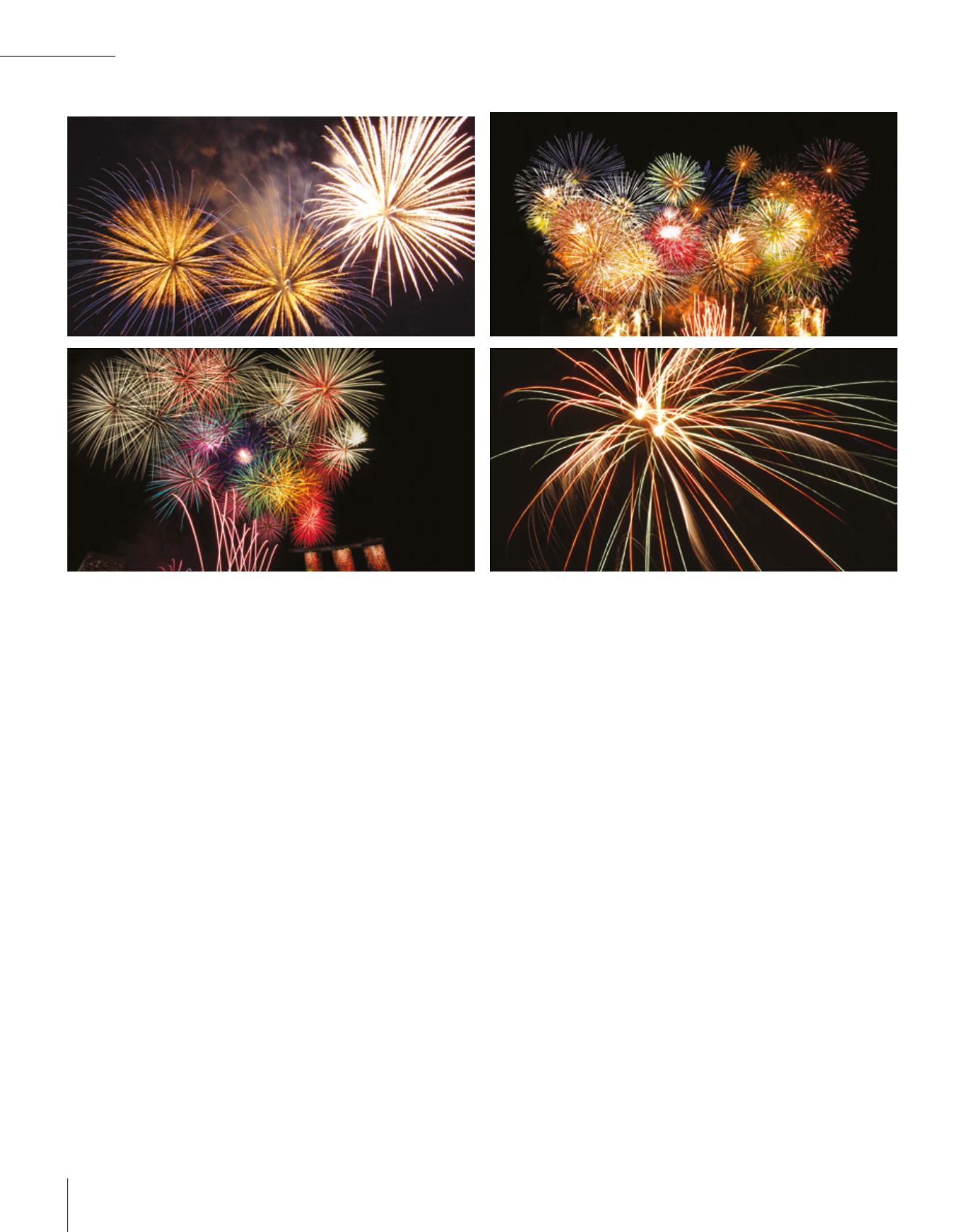
68
sadece eğlence amaçlı değil
savaş uçaklarının hedeflerini
aydınlatmak istedikleri
zamanlar da ya da gemiler
arasında haberleşme aracı
olarak da işe yarayabileceği
fark edildi.
Yerde ve havada patlayan
fişekler olarak iki türü olan
havai fişekler, kendi aralarında
kullanım amaçlarına göre
de sınıflarına ayrılıyorlar.
Havai fişekler, kâğıt ve karton
bir tüp veya kaplama içine
doldurulmuş olan kolay
tutuşma özelliğine sahip
malzemenin patlatılması anına
kadar, birçok aşamadan
geçiyor. Genel olarak uzun tüp
biçiminde olan ve “piroteknik
karışım” olarak da bilinen havai
fişekler duyduğumuz sesleri,
gördüğümüz dumanları ve
izlerken türlü benzetmelerde
bulunduğumuz şekilleri ortaya
çıkaran malzemelerden
oluşuyor. Bazı kaynaklara
göre Hinduların icadı olduğu
söylenmesine rağmen, Antik
Çin’in 4 büyük icadından
biri kabul edilen havai
fişeğin havaya fırlatılma anı
kimyasal enerjinin kinetik
enerjiye dönüşümü olarak
da açıklanıyor. Havaî fişeğin
patladığı an ise kimyasal
enerjinin ışığa ve sese
dönüştüğü an oluyor. Yer
çekimi de havaya fırlatılan
fişeklerin ters bir parabol
şeklinde yörünge çizmelerinde
rol oynuyor. 1258 yılında
Avrupa’nın barut kullanmaya
başlamasından sonra
geliştirilerek eğlence sektörüne
girebilen havai fişeğin
temelinde klorat ve perklorata
adı verilen maddeler bulunuyor.
İçeriğindeki malzemelerin,
büyük bir dikkatle bir araya
getirilmesinden oluşan ışık
şöleni 18.yüzyılda bütün
Avrupa’ya yayılmıştı. 19.yüzyılın
başlarına kadar havai fişek
yalnızca sarı alev ışıkları
olarak görünürdü. 18.yüzyılda
potasyum nitratın kimyasal
bileşimle elde edilmesi ile
birçok rengin aynı anda
görülmesini sağlayan önemli
bir adım atılmış oldu. Havai
fişeğin oluşumunu sağlayan
among themselves regarding
the purpose of use. Fireworks
pass through many stages from
the filling of a material that is of
easily flammable characteristic
into a paper and cardboard tube
or a coating, until the moment
of shooting for its explosion.
Fireworks that are in general
in the form of a long tube and
known as a “pyrotechnic mixture”
create the sounds that we hear
and the smoke that we resemble
to many different things when
watching. Even though some
sources claim that fireworks were
invented by the Hindus, they
are recognized as one of the
four major inventions of ancient
China and the moment when
fireworks are launched in the air
is explained as the conversion
of chemical energy to kinetic
energy. Whereas the moment at
which the fireworks explode is
the moment when the chemical
energy is converted into light and
sound. The gravitation force plays
a role in the fireworks’ drawing
an orbit in the form of an inverse
parabola.
Chlorate and perchlorate form
the basis of fireworks that
were started to be used in
the entertainment sector after
Europeans started using gun-
powder in 1258.
The feast of light composed by
gathering of its content together
with meticulous care spread
throughout the entire Europe
in the 18th Century. Until the
beginning of the 19th Century,
fireworks appeared only as lights
of a yellow flame. Upon obtaining
the potassium-nitrate by a
chemical composition in the 18th
Century, a significant step was
taken in providing the formation
of many colors at the same time.
When the fireworks mixture burns
sufficient enough to explode,
several metals are added into
this mixture that colors this
magnificent show in the sky by
changing into gaseous form.
For example; the effects of
barium salts give green color,
while strontium gives red, and
copper combined with the
effect of chlorine which is a
byproduct that forms due to
burning of potassium nitrate,
creates the color blue. Many
people recognizing the fact that
chemicals and metals cannot
seem this lovely and magnificent
anywhere else are interested in
the dance of colorful lights rather
detay
detail


